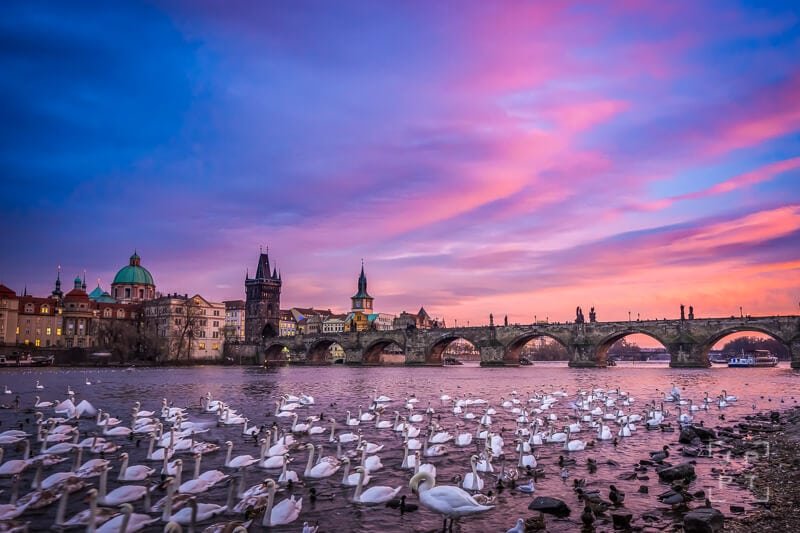Recommended photography gear for the Prague photo tour
In this short article, I will share with you recommended photography equipment to bring for the photo tour in Prague, and I’ll also share what other gear you may find helpful during your time in Prague.
Must-have photography gear for the photo tour
- Camera or a smartphone
- A wide-angle lens, such as a 10-20 mm, 16-35 mm, 18-55 mm, 24-70 mm, or similar
- A sturdy tripod, you can rent one from Jan for the tour,
- A fully charged battery and, ideally, one spare charged battery
- A memory card that has enough space for about 100 RAW files
- Cleaning tools, such as microfiber lens wipes and an air blower
- Camera backpack, ideally with an attachment for a tripod; no rollers, please.
Nice-to-have photography gear for the photo tour
This section lists the equipment you should bring on the tour if you own it and have it in Prague. You don’t need to buy it just because of the photo tour.
- A mid-range zoom lens, such as 24-70 mm
- A telephoto lens, such as 70-200 mm or 100-400 mm
- ND filters, ideally 6-stop and 10-stop filters for long exposures
- A cable release if you want to take long-exposure shots with a shutter speed of over 30 seconds
Other pieces of photo equipment you may use in Prague on your own
Please don’t bring these to the tour; we will not need them. But if you enjoy particular genres like street photography, you may find these valuable.
- Fast prime lens. Typically, it is something like 35 mm or 50 mm with f/1.8. It’s great for street photography as it’s usually compact. Fast aperture allows you to separate the foreground and can be used to shoot details or portraits.
- Second camera body. I could have also listed it in the nice-to-have section if you don’t want to switch lenses constantly. I travel with a second body as a backup and leave it in my hotel room.
- Backup battery charger. What if your only charger malfunctions? If you can charge your camera through a USB-C, that is considered a backup in such a scenario.
- A camera clamp to shoot with low ISO in places where tripods are not allowed or convenient, such as for shooting the twilight from the Old Town Hall Tower.
If you have any questions regarding the gear for our tour, don’t hesitate to ask me before you leave home.

